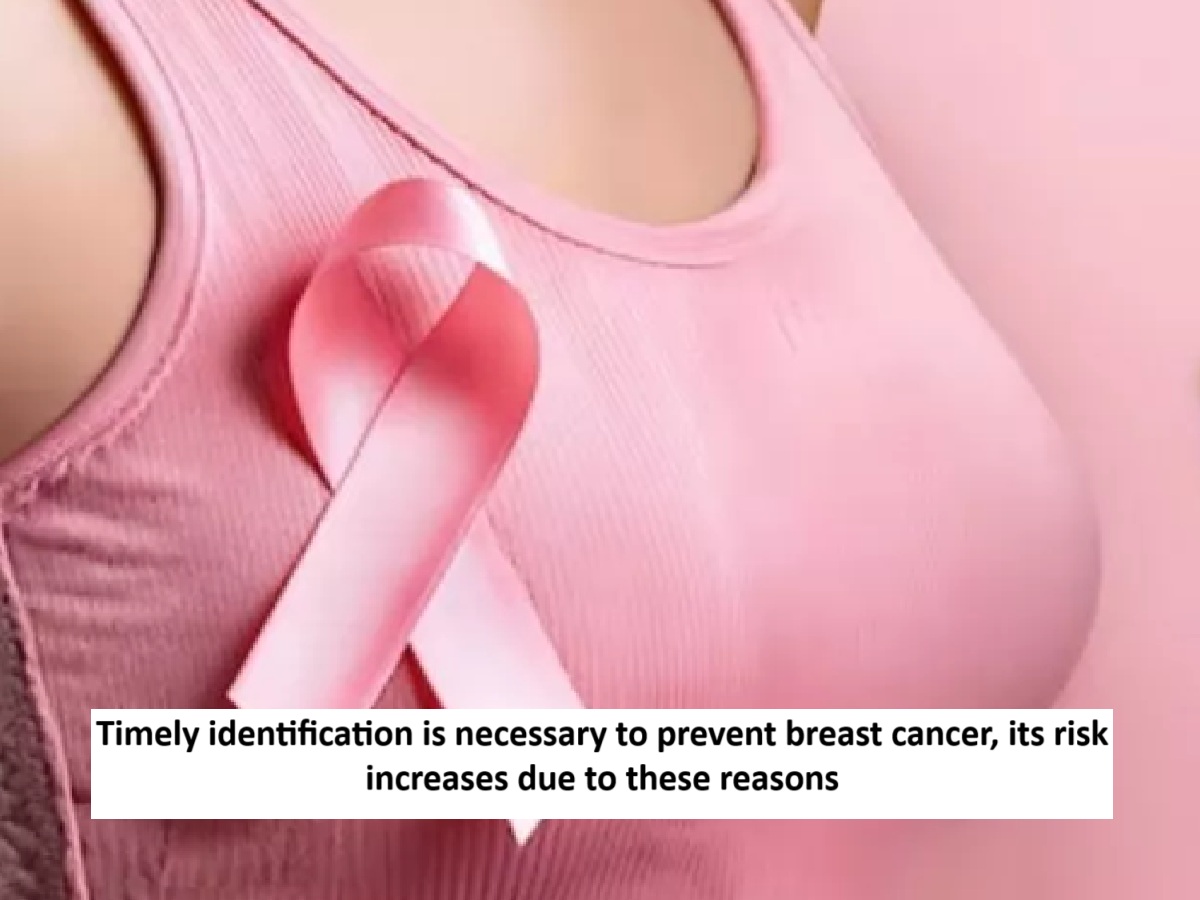
News Topical, Digital Desk : Breast cancer is the cancer that develops in the cells of the breast. If it is not controlled in time, it starts attacking healthy breast tissues and reaches the lymph nodes of the underarms.
Once it reaches here, it can spread to any part of the body. Detecting breast cancer before this happens increases the survival rate. In this article, we will learn about the symptoms, risks and prevention methods of breast cancer.
These could be the symptoms
- A lump or thickening of the breast tissue or an abnormal feeling
- Pain in the breast
- skin discoloration
- Discharge from the nipple other than breast milk
- Swelling throughout the breast
- Bleeding from the nipple
- peeling, flaking of the skin of the breast or nipple
- Sudden change in breast size
- inward retraction of nipple
- Lumps or swelling in the underarms
These increase the risk
There are some things that increase the risk of breast cancer, but do not mean you will definitely get cancer:
- Alcohol consumption: This increases the risk of breast cancer.
- Hormone therapy: While it helps to relieve symptoms of menopause, postmenopausal estrogen and progesterone increase the risk of breast cancer.
- Not getting enough exercise: Not being physically active increases the risk of cancer .
These risks of breast cancer cannot be changed
- Age: As age increases, the risk of breast cancer also increases. It has been seen in a more fatal form in people over 55 years of age.
- Dense breast tissue: If your breast tissue is too dense, it can make mammograms difficult and also increase the risk of breast cancer.
- Genetic risk: If someone's mother, sister, grandmother or maternal grandmother has breast cancer, then the risk of getting it increases.
This is how the stages are decided
Doctors decide the stage of breast cancer based on the size and spread of the tumor. Large tumors or cancer that has spread to nearby tissues or organs are placed in the last stage, while small tumors or cancer limited to the breast are placed in the first or second stage. For this, doctors find out the following things:
- Whether the cancer is fatal or not.
- How big is the tumor?
- Whether the cancer has spread to the lymph nodes.
- Whether the cancer has spread to nearby tissues or organs.
What should be the screening at what age?
- Between 40-44 years: Optional mammogram once a year.
- Between 45-54 years: Mammogram every year.
- Age 55 or older: Mammograms can be done every year or every two years.
--Advertisement--

 Share
Share



